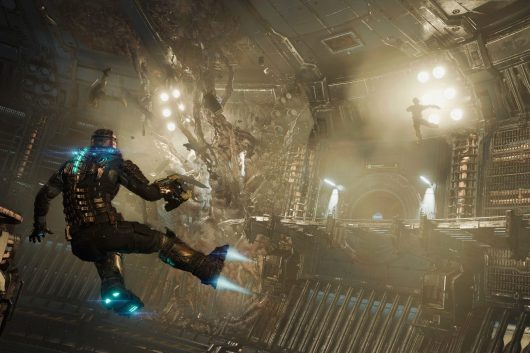


**In the Realm of Digital Gaming, Tension is Deliberately Designed, Not Coincidental**
Within the universe of digital gaming, tension serves as a thoughtfully designed aspect. By influencing players’ expectations, anxieties, and aspirations, game creators can expertly manage emotional pacing and choices. This piece explores the dynamics of anticipation in gaming, demonstrating how tension boosts engagement, steers player behavior, and enriches game design.
**Anticipation in Unpredictable Systems**
A prime illustration of anticipation can be observed in systems centered around unpredictability and postponed results. These mechanics function effectively in classic games and are also fundamental in establishing tension within interactive settings, as exemplified by online slots, where the experience relies on the duration between initiating a spin and witnessing the outcome.
Visual and auditory elements like spinning symbols, rhythmic sounds, and precisely timed visual indicators are crafted to elevate suspense. Near misses, where symbols almost align yet fall short, intensify psychological tension by creating a sense of narrowly avoided success. Through variable timing and random number generation, outcomes stay unpredictable, maintaining focus on the reveal. Although this technique serves a commercial function in its initial application, the underlying principles are broadly relevant.
**Uncertain Rewards in Role-Playing Game Frameworks**
Role-playing games that feature treasure chests or loot boxes illustrate anticipation through managed delays and presentations. When a player opens a chest, the procedure is seldom immediate. Instead, the game may exhibit a shimmer of light, a gradual animation of the lid lifting, or a slow unveiling of the items within. Sound effects frequently rise in pitch just prior to the reveal, echoing a musical buildup before a climax.
Each visual and auditory cue influences the player’s expectations, heightening the perceived importance of the outcome. Even when the actual reward is minimal, the multifaceted presentation guarantees that the player feels emotional tension during the wait. This framework transforms a standard mechanic into an event, demonstrating that anticipation thrives on timing, presentation, and unpredictability.
**The Psychological Basis of Anticipation**
Human perception is very attuned to timing. When there is a delay in an outcome, the mind begins to generate possibilities. That interval between action and result sparks curiosity and emotional involvement. In game design, even a brief delay before feedback can intensify focus and render the eventual result feel more significant. Uncertainty is another significant factor. When the logic behind a result is partially concealed, players ponder potential patterns or probabilities. This “information gap” keeps attention engaged. Anticipation flourishes when players can foresee some outcomes but not all, creating a balance of control and unpredictability.
Near misses also affect behavior. When an outcome seems almost successful, players perceive it as partial progress, encouraging ongoing involvement. The same principle is observable in action sequences, where narrowly evading defeat or just missing a target evokes an instinctive urge to try again.
**The Importance of Pacing and Rhythm**
Tension is reliant on rhythm. Games that sustain constant intensity rapidly lose their emotional impact. Consequently, designers alternate between tranquil moments and periods of heightened suspense. Slow segments promote contemplation, while bursts of uncertainty invigorate attention.
Anticipation thrives on contrast. A quiet corridor prior to a boss fight, a loading bar that fills gradually, or a cinematic pause before a reveal all utilize timing to produce emotional surges. The player’s awareness of what might occur next is often more thrilling than the event itself. When developers excel at pacing, they not only influence how players feel but also when they experience those feelings. This synchronization between design rhythm and player expectation is a hallmark of refined interactive storytelling.
**Design Strategies That Cultivate Anticipation**
Game developers implement various repeated techniques to elicit anticipation without overwhelming players. One strategy is staggered revelation, where events unfold in stages, akin to a series of doors unlocking consecutively. This maintains attention through a succession of small resolutions rather than a singular moment. Another strategy is temporal manipulation. Minor delays before significant events, such as loading animations or charging sequences, allow time for the player’s imagination to fill in the void.
Sensory escalation also contributes. Gradual increases in visual or auditory intensity, the hum of machinery becoming louder, the lights dimming, or the screen vibrating indicate that a pivotal moment is approaching. These signals enhance alertness and anticipation without overt exposition. Lastly, managed randomness ensures that outcomes cannot be flawlessly anticipated. Procedural systems, dynamic enemy appearances, or varied event timings prevent monotony from dulling emotional responses.
**Implementing Anticipation Across Different Genres**
While tension is frequently linked with horror or action games, anticipation is present in nearly every genre. In stealth games, holding one’s breath while waiting for a guard to pass illustrates timed uncertainty. In adventure games, a delayed puzzle solution keeps the player engaged in exploration. In strategy games, the fog of war creates ongoing anticipation, as unseen adversaries may strike at any time.
Even narrative-driven games utilize it by withholding crucial information to amplify story revelations. In all these situations, anticipation fosters focus and emotional connection.
No Comments
To comment you need to be logged in!